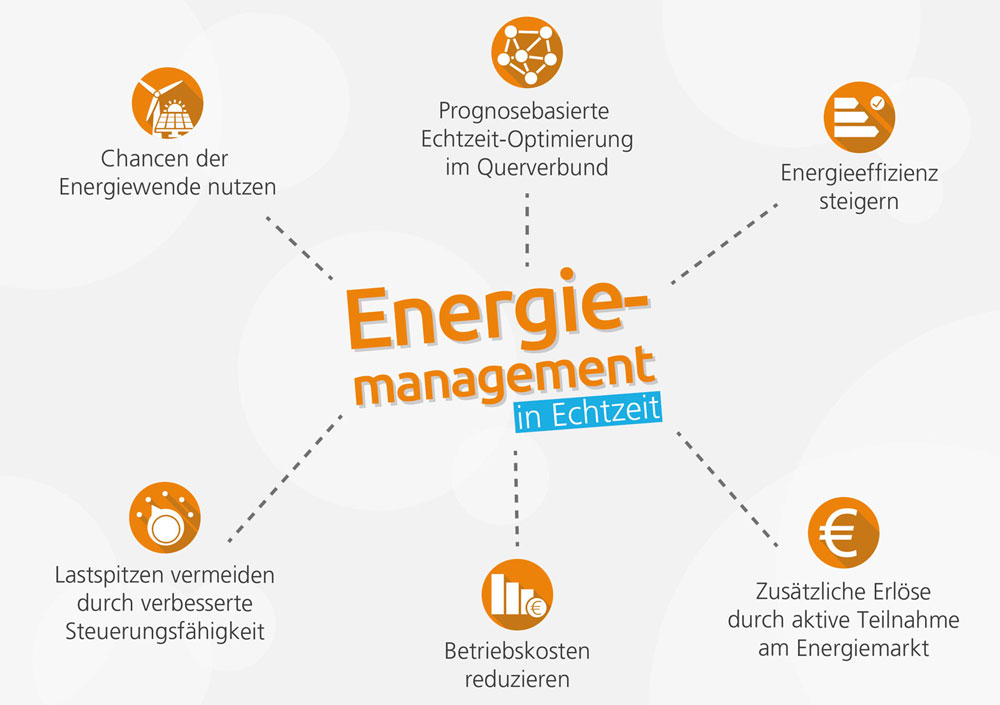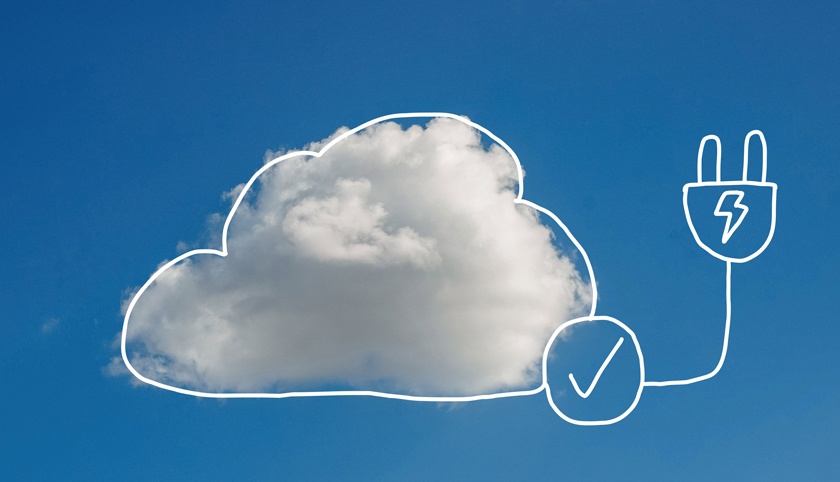More and more industrial enterprises are looking for an innovative concept that will allow them to reduce energy costs and further increase energy efficiency in order to maintain and expand their own profitability and competitiveness. One of these concepts is digital energy management with a holistic point of view and real-time optimisation in their interlinked energy generation system.
In addition to steam, process heat and cooling, many industrial enterprises also produce their own electricity. In-house generation makes them a “prosumer” (producer/consumer) with great potential for flexibility. Their plants offer a wide range of potential for shifting loads and generation, degrees of freedom in the interlinked energy generation and consumption network and many different options for storing energy. In their role as prosumers, companies now have the opportunity to actively manage energy and to take advantage of price fluctuations on the energy market. Because there are very few energy management systems that allow for predictive control and optimisation of the entire system in real time, this is an opportunity that has only been taken advantage of to a limited extent up to this point.
Conventional energy management systems offer only limited support in this area, with their monthly reporting enabling structural improvement of the energy system on an ongoing basis. However, the associated reports are based exclusively on collection and subsequent analysis of historical energy consumption data. Energy sources are often viewed in isolation from each other. Energy-relevant systems are frequently controlled on a system-specific basis and without networking, making it difficult to coordinate the systems with each other.

Holistic view and real-time optimisation in the interlinked energy generation network
With smart energy management based on forecasts and sensors as well as generation and consumption in an interlinked energy generation and consumption network – that is, across all energy sources and in real time – enterprises can identify potential for load shifting, optimise their own energy generation and the operation of their energy storage systems, view these systems holistically and manage them on the same basis. Such real-time systems are also able to prevent expensive load peaks in the event of unexpected outages, to take into account the volatile nature of in-house production of power from wind power and photovoltaic installations and to optimise the use of combined heat and power units. This allows procurement costs to be reduced and additional profits to be generated through active participation in the energy market.
By considering the interdependencies between plants and buildings in their energy systems, industrial energy consumers gain a better understanding of the optimal use of various energy sources. This consideration of the entire interlinked energy generation and consumption network reveals potential for load shifting and storage, allowing load peaks to be avoided more systematically. In the long term, energy consumption can be reduced in general through more demand-oriented energy production. For example, even a time delay or a slight overshoot or undershoot of target temperatures for heating and cooling can be associated with significant financial benefits.
Active participation in energy trading
The volatile prices offer potential for purchasing power cheaply but also make energy procurement more complex. If enterprises analyse the forecast of their future energy demand in conjunction with forecast energy procurement prices, the procurement strategy can be improved by shifting purchasing to times of favourable energy prices when possible. On the other hand, enterprises can generate additional revenue in times of high prices by offering surplus energy from their in-house generation on the intraday market or by participating in the control energy market.
Big data becomes smart data
Optimal dovetailing of generation and consumption requires real-time information and communication technology (ICT) as well as analysis tool that enable intelligent
evaluation of large volumes of data. This requires data organisation that can be flexibly adapted and that processes large amounts of data in real time using in-memory database technology. High-performance and customisable import interfaces integrate a variety of data sources, including exchange data, weather forecasts and measurement data from building management systems.
In addition to the data from meters and plant sensors, weather and price information is taken into consideration, along with forecasts for demand (electricity, cooling, heat) and renewable generation (photovoltaics, wind). All data is then made available to an optimisation model, which optimises generation in the interlinked energy generation and consumption network using storage capabilities and taking intraday prices into account. The large volume of data (“big data”) thus provides useful insights that improve forecasts, controls and decisions (“smart data”). The result is optimal schedules for flexible generators and consumers in the energy system, allowing individual plants to be controlled according to demand. This anticipatory operation of the energy system has the added benefit of enabling enterprises to better respond to unexpected operating conditions.
In use at Stuttgart Airport
In the “SmartEnergyHub” project funded by Germany’s Federal Ministry for Economic Affairs and Energy (BMWi), Seven2one is developing a prototype of such an energy management system in association with the project partners Fichtner IT Consulting AG, Integrierte Informationssysteme GmbH, Fraunhofer IAO and IAIS. At Stuttgart Airport, the existing energy management system is being expanded into a real-time forecast-based energy optimisation and control system that takes into account all energy sources (electricity, heating, cooling, ventilation and air conditioning). The “SmartEnergyHub” project will demonstrate how operators of complex infrastructures can take advantage of savings potential and added value through the use of intelligent IT solutions.




0 Comments